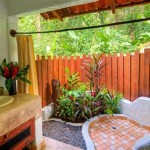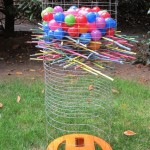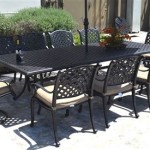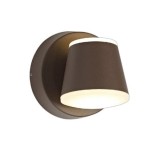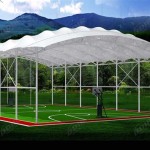Indoor Outdoor Ceiling Fans With Remote: A Comprehensive Guide
Ceiling fans have evolved from simple cooling devices to sophisticated appliances offering both functional benefits and aesthetic appeal. Indoor-outdoor ceiling fans with remote controls represent a significant advancement in this evolution, providing convenience and versatility for homeowners. These fans are designed to withstand the elements while offering the same comfort and control as their indoor counterparts. Understanding the features, benefits, and selection criteria for these fans is crucial for making an informed purchase.
This article provides a comprehensive exploration of indoor-outdoor ceiling fans with remote controls, covering their construction, functionalities, selection considerations, and maintenance. The goal is to equip readers with the knowledge necessary to choose the right fan for their specific needs and ensure its optimal performance and longevity.
Understanding the Distinctions: Indoor vs. Outdoor Ceiling Fans
The primary difference between indoor and outdoor ceiling fans lies in their construction and materials. Indoor fans are typically designed for use in dry environments, while outdoor fans are built to withstand exposure to moisture, humidity, and even direct rainfall in some cases. This distinction necessitates the use of different materials and protective measures.
Outdoor ceiling fans are often constructed with rust-resistant materials such as stainless steel, aluminum, or specially treated composite materials. These materials prevent corrosion and degradation, ensuring the fan's longevity in outdoor conditions. The motor housings are also typically sealed to protect the internal components from moisture and dust. Blades are frequently made from all-weather materials like ABS plastic or acrylic, which resist warping, cracking, and fading due to prolonged exposure to sunlight and moisture.
Furthermore, outdoor ceiling fans are often rated for different levels of outdoor exposure. A "damp-rated" fan can be used in covered outdoor areas, such as patios or porches, where it is sheltered from direct rain but may be exposed to humidity. A "wet-rated" fan, on the other hand, is designed to withstand direct exposure to rain and other outdoor elements. It's crucial to choose the appropriate rating based on the specific location where the fan will be installed.
Using an indoor ceiling fan in an outdoor environment is not recommended, as it can lead to premature failure and potentially pose a safety hazard. The motor and other components are not designed to withstand moisture, and corrosion can compromise the fan's structural integrity. The use of an inappropriate fan can also void the warranty.
The Advantages of Remote Control Functionality
The addition of a remote control significantly enhances the convenience and usability of both indoor and outdoor ceiling fans. Remote controls allow users to adjust the fan's speed, turn the light on or off (if equipped), and even reverse the motor direction without having to physically reach for a pull chain or wall switch. This is particularly beneficial for high ceilings or outdoor installations where access to the fan might be difficult.
Remote controls offer increased flexibility in controlling the fan's operation. Users can adjust the fan's speed to their preferred comfort level without having to move from their seat. This is especially appreciated during warm summer evenings when slight adjustments to the airflow can make a significant difference in perceived temperature. Some remote controls also feature programmable timers, allowing users to set the fan to turn on or off at specific times, further enhancing energy efficiency and convenience.
In addition to the basic speed and light controls, some advanced remote controls offer features such as "breeze mode," which simulates natural wind patterns by varying the fan speed, and "sleep mode," which gradually decreases the fan speed over time to provide a comfortable sleeping environment. These features add to the overall user experience and allow for greater customization of the fan's operation.
Modern remote controls often use radio frequency (RF) technology, which provides a longer range and more reliable signal compared to older infrared (IR) remote controls. RF remote controls do not require a direct line of sight to the receiver, allowing users to control the fan from anywhere within range. Furthermore, some fans are compatible with smart home systems, allowing users to control the fan through a smartphone app or voice commands.
When selecting a ceiling fan with a remote control, it is important to consider the ease of use and functionality of the remote. Look for a remote with intuitive buttons and a clear display. Also, consider the range of the remote and whether it offers the features that are most important to you. Some remotes may require batteries, while others may be rechargeable. It is also important to ensure that the remote is compatible with the specific ceiling fan model.
Key Considerations When Choosing an Indoor-Outdoor Ceiling Fan with Remote
Selecting the right indoor-outdoor ceiling fan with a remote control involves considering several factors, including size, style, features, and installation requirements. Careful evaluation of these aspects will ensure that the chosen fan meets the specific needs of the intended space and provides optimal performance.
Size: The size of the ceiling fan should be proportional to the size of the room or outdoor area. A fan that is too small will not provide adequate airflow, while a fan that is too large can be overwhelming and inefficient. The appropriate fan size is typically determined by the room's square footage. For example, a room up to 75 square feet typically requires a fan with a blade span of 36 inches or less. Rooms between 76 and 144 square feet may require a 42-inch fan, while larger rooms may require a 52-inch fan or larger. When choosing a fan for an outdoor space, consider the overall dimensions of the area and the desired level of airflow.
Style: Ceiling fans are available in a wide variety of styles, ranging from traditional to modern to rustic. The style of the fan should complement the overall decor of the room or outdoor area. Consider the color, finish, and blade design when selecting a fan. Some fans feature intricate details, while others have a more minimalist aesthetic. Choose a style that reflects your personal taste and enhances the ambiance of the space.
Features: In addition to the basic functions of cooling and lighting, some ceiling fans offer additional features that can enhance their usability and convenience. These features may include a reversible motor for year-round use, multiple speed settings, a dimmable light, and a timer function. The availability of these features can vary depending on the specific fan model. Consider which features are most important to you and choose a fan that offers them.
Installation: The installation of a ceiling fan typically requires some electrical knowledge and experience. If you are not comfortable working with electricity, it is recommended to hire a qualified electrician to install the fan. Ensure that the ceiling can support the weight of the fan and that there is adequate clearance between the fan blades and the ceiling and walls. Follow the manufacturer's instructions carefully during installation. For outdoor installations, ensure that the wiring is properly weatherproofed and that the fan is installed in a location that is protected from excessive wind.
Energy Efficiency: Consider the fan's energy efficiency rating when making your selection. Fans with a higher energy efficiency rating will consume less electricity and save you money on your energy bills. Look for fans that are Energy Star certified, as these models have been independently tested and verified to meet strict energy efficiency standards.
Warranty: Check the warranty on the ceiling fan before making your purchase. A longer warranty typically indicates that the manufacturer has confidence in the quality and durability of the product. Be sure to understand the terms and conditions of the warranty before you buy the fan.
Blade Pitch: Blade pitch refers to the angle of the fan blades. A steeper blade pitch will move more air, but it may also consume more energy. A shallower blade pitch will move less air but will be more energy efficient. Choose a blade pitch that is appropriate for the size of the room and the desired level of airflow.
Motor Type: Ceiling fans are available with different types of motors, including AC and DC motors. DC motors are typically more energy efficient and quieter than AC motors. They also offer a wider range of speed settings and can be controlled more precisely. However, DC motors are typically more expensive than AC motors.
Light Kit: Many ceiling fans come with an integrated light kit. When selecting a fan with a light kit, consider the type of lighting that you prefer. Some fans use incandescent bulbs, while others use LED bulbs. LED bulbs are more energy efficient and have a longer lifespan than incandescent bulbs. Also, consider the brightness of the light. Choose a light kit that provides adequate illumination for the room or outdoor area.
Maintaining Your Indoor-Outdoor Ceiling Fan with Remote
Proper maintenance is essential for ensuring the longevity and optimal performance of your indoor-outdoor ceiling fan with remote. Regular cleaning and inspection can prevent issues such as dust buildup, motor problems, and loose connections. Following a simple maintenance routine can extend the life of your fan and keep it running smoothly.
Cleaning: Dust can accumulate on the fan blades and motor housing over time, reducing its efficiency and potentially causing the motor to overheat. To clean the fan, turn it off and allow the blades to come to a complete stop. Use a soft cloth or duster to wipe the blades and motor housing. For stubborn dirt or grime, you can use a mild soap and water solution. Be sure to dry the fan thoroughly after cleaning.
Inspection: Regularly inspect the fan for any signs of damage or wear. Check the blades for cracks or chips and ensure that they are securely attached to the motor. Inspect the motor housing for any signs of corrosion or damage. Check the wiring connections to ensure that they are tight and secure. If you notice any problems, address them promptly.
Blade Balancing: Over time, the fan blades can become unbalanced, causing the fan to wobble or vibrate. This can be annoying and can also put stress on the motor. To balance the blades, you can use a balancing kit, which typically includes weights that can be attached to the blades. Follow the instructions that come with the balancing kit to balance the blades properly.
Remote Control Maintenance: The remote control also requires some maintenance. Replace the batteries when they are low. Clean the remote control with a soft cloth. Avoid dropping or exposing the remote control to extreme temperatures or moisture.
Professional Maintenance: Consider having your ceiling fan professionally inspected and maintained every few years. A qualified electrician can identify and address any potential problems before they become serious. They can also lubricate the motor and check the wiring connections to ensure that the fan is running safely and efficiently.
By following these maintenance tips, you can keep your indoor-outdoor ceiling fan with remote running smoothly and efficiently for years to come.

Carro Essex 60 In Dimmable Led Indoor Outdoor Black Smart Ceiling Fan With Light And Remote Works Alexa Google Home Hs605j L12 Bg 1 The

Altitude Arlette 60 In Led Indoor Outdoor Brushed Nickel Ceiling Fan With Remote Control And White Color Changing Light Kit 131l60bnslv The Home

Yardreeze 60 In Black Color Changing Led Indoor Outdoor Ceiling Fan With Light Remote 6 Blade The Fans Department At Lowes Com

Modern Ceiling Fans With Remote Black Fan Indoor Outdoor For Patios Farmhouse Bedroom 52 Matte Shein Usa

Oaks Decor Woodview 52 In Chrome Color Changing Led Indoor Outdoor Ceiling Fan With Light Remote 5 Blade The Fans Department At Lowes Com

60 Inch 3 Solid Wood Blades Dc Motor Ceiling Fan With Lights And Remote Multi Functional Dimmable Light Fixture Suitable For Living Room Corridor Indoor Outdoor Black Walmart Com

Aire By Minka Wrightway 52 In Indoor Outdoor Coal Ceiling Fan With Remote Control 04740 The Home

Estero 52 In Integrated Led Indoor Outdoor Pure White Ceiling Fan With Light And Remote Control Dan S City Fans Parts Accessories

52 Smart Ceiling Fans With Lights And Remote Control Farmhouse Indoor Outdoor 6 Speed 3 Wood Fan Blades Noiseless Reversible Energy Saving Dc Motor Natural Walnut Walmart Com

52 Luna Indoor Outdoor Ceiling Fan And Light In Pure White Dan S City Fans Parts Accessories

